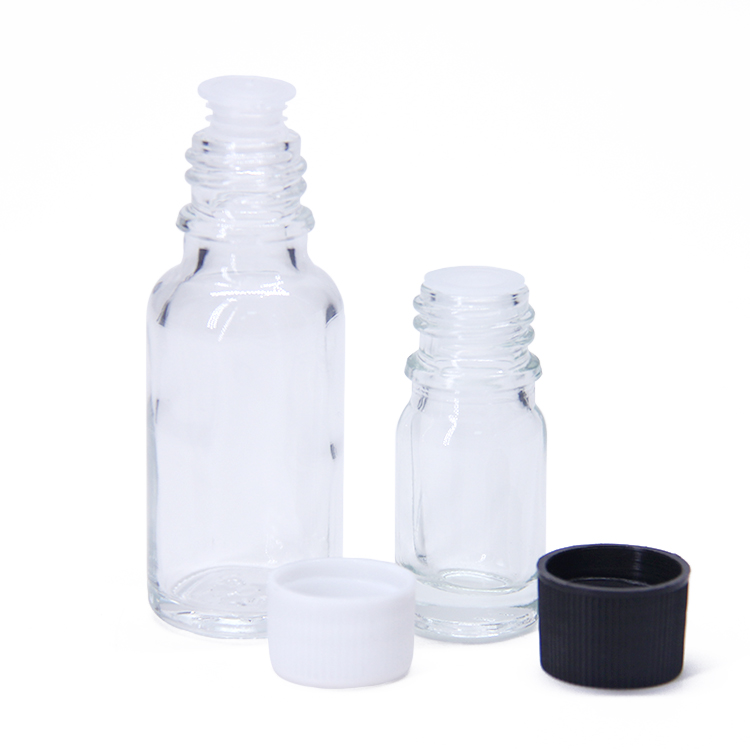Investigating the Applications of Glass Containers with Lids in Medical and Laboratory Settings
Investigating the Applications of Glass Containers with Lids in Medical and Laboratory Settings
Visiting a lab technician's office to submit samples of your blood, stool, or urine can feel somewhat unusual. The pristine walls and surfaces, along with the strange medical instruments, contribute to this sensation. The strong smell of disinfectant is hard to ignore as well. Notably, the color scheme leans heavily towards neutral tones—whites, greys, blues, nudes—and there’s an emphasis on transparency. Clear glass jars with lids are common fixtures in any laboratory setting, whether it's medical, research-based, or educational—and there's a good reason for that.
Transparent containers serve numerous purposes in scientific and medical fields. While plastic options are widely used, glass jars with lids stand out significantly. Additionally, squat jars of different sizes offer even more functionality in these settings.

Why Squat Jars are Laboratory Favourites
Squat jars are glass containers that feature a cylindrical shape, straight sides, and a short neck. Typically equipped with nonreactive, airtight twist-off lids, these jars are easily accessible. Their transparent design and flat, robust bases make them stand out as practical storage solutions. Additionally, they are durable, can be reused multiple times, and are resistant to chemical damage.
Squat jars serve multiple purposes across different settings. Renowned for their ability to hold large amounts of diverse materials, they can accommodate everything from ointments and pills to chemicals and acids. Additionally, they are effective for storing cosmetics and various food products in domestic spaces. These jars come in a range of sizes, typically between 30ml and 500ml.
5 Uses of Glass jars with Lids in a Laboratory
1. As Weighing Bottles
In the laboratory, squat glass jars equipped with lids can function as weighing vessels. Their surfaces are exceptionally clear and smooth, facilitating easy reading of both their contents and weights on a scale. Additionally, the jars' wide openings make it convenient to fill and empty them. These weighing vessels enable precise measurement of laboratory materials, even in small amounts.
2. For Keeping Sterile Materials
Squat jars are frequently utilized for storing sterile items such as surgical instruments, gauze, and cotton balls. These sealed glass containers with lids safeguard their contents from dirt and contamination.
3. For Holding Laboratory Specimens
Using formaldehyde to maintain the integrity of animal or plant specimens is a widespread practice. Glass jars with lids are effective for storing these specimens. Squat jars, in particular, are especially practical for preserving specimens intended for future examination or use, as their wide openings facilitate easy immersion and storage of various items.
4. For Preserving Test Samples
Lidded glass containers are ideal for gathering biological test specimens. These can include urine, stool, blood, or tissue samples that must be stored in sterile environments. Additionally, they are suitable for preserving environmental samples like water and soil for future examination. Moreover, the clarity of these jars allows for the observation of any physical or chemical transformations that may occur within them.
5. For Storing Chemicals
Using glass jars with lids for the storage of chemicals, reagents, and various solutions is a widely accepted method. These glass vessels are impervious to rust and resistant to chemical reactions. They feature a wide, stable base, and their airtight seals help preserve the contents over extended periods. Under typical circumstances, the stored materials remain safe from evaporation, spillage, or contamination.
Conclusion
Lidded glass containers are extensively used in both medical and scientific settings. They provide an airtight seal, resist rust, and withstand chemical reactions. Their clear design enables easy visibility of the contents, allowing for clear observation of any changes occurring within. However, it remains essential to use personal protective equipment in a lab environment, especially when dealing with glass jars. If you come across any glass that is cracked or shattered, it's best to dispose of it immediately.